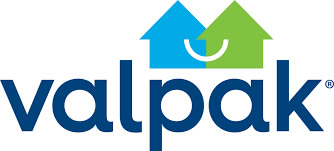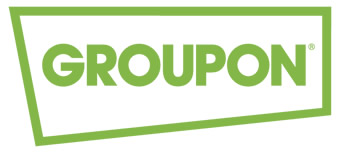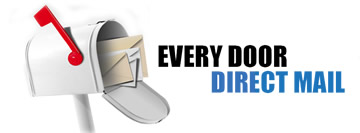Ad Cost Comparison for Groupon, Valpak, Newspaper, and Postal Service
Below are our calculations for advertising in these competing mediums. We have used areas and advertising costs in our city of Medford, Oregon and chosen to target 20,000 prospects. Numbers in your area or city may vary, but will generally follow along similar lines of costs, results, and effectiveness.
Of course, you can repeat our research in your local area if you wish.
Groupon Advertising (Description)
Unlike our service and the other services described below, which are all active outreach methods, Groupon is a passive advertising medium. That is, only people who choose to go to the Groupon website can ever see your ad. So you cannot really target people by age or area or anything else, except that you know they are bargain-hunters.
Many businesses feel that bargain-hunters rarely become repeat customers or patients, that they only buy when it’s on sale. Bargain hunters look for coupons in the “shopper” newspaper, in coupons books, and on Groupon. Here’s how it works when you advertise on Groupon …
You set up some offer on the Groupon website. You are required to provide a deep discount, and Groupon then sells your “package” online to website visitors. And then you give most of the money from these online sales to Groupon. So what do you get? Not much in the way of money. You are hoping that the people who buy one time from Groupon … will return and become customers, clients, or patients and buy from YOU.
Although getting someone to come in once is a tried-and-true marketing method, does it work for dyed-in-the-wool bargain hunters? Many businesses think not.
And in fact most merchants who try Groupon immediately stop doing it. This should tell you something about how useful they found it. If you want to be certain, try it. See for yourself. Just don’t expect much response, and don’t expect business growth.
Groupon Advertising (Costs)
It is very difficult to determine the cost of reaching 20,000 prospective customers, clients, or patients, because Groupon charges nothing until they collect the revenue from your online package sales, and you have no information about how many bargain-seekers travel to the Groupon website in the month or how many pass on your ad. You pay Groupon fees when you turn over nearly all of the money from Groupon’s sales of your special offer.
Only if you calculate how much your giving away your product/service costs you, and how many new customers you get each month, and whether or not these people turn into regular, paying business can you calculate whether this worked for you or not. Most merchants who try it, quickly stop doing it. This is NOT what you usually see for something that works.

Valpak Advertising (Description)
The venerable blue envelope of coupons by mail has been going for many years, and it does work for certain types of business. Their number-one best seller is pizza, then restaurants or entertainment in general, and then dentists, carpet-cleaners, and oil-change places.
These businesses are counting on a one-time customer becoming a repeat customer, and generally this approach works well for smart marketers across all advertising media, as long as you’re not getting only bargain hunters, and when you know your numbers. The two numbers you need to know are —
- How much is a new customer’s lifetime value? (In other words, if you’re a dentist and the guy comes in once, he tends to return, and how many dollars does he spend over all the months or years that he is your patient? It can be a surprisingly large number.)
. - How many customers/clients/patients do you get from a Valpak mailing? And how much did it cost you for the advertising to get them?
Once you know these two numbers, it’s easy to calculate whether you should continue to run Valpak coupons. (If you want to talk about this, we’d be happy to assist with calculations, and how to construct an offer likely to work well, just to help out.)
Although our online outreach marketing usually outperforms Valpak — because we can target particular ages, geo-locations, gender, and much more — Valpak works well for many business types.
Valpak Advertising (Costs)
Valpak has divided our local area into 7 “zones” of 10,000 addresses each. Sending a coupon to two zones (totalling 20,000 addresses) is $700.
The most optimistic calculation we can find suggests that, at best, less than a third of the people who get the blue envelope ever open it, and probably less than that actually look at all the coupons. (Your coupon is buried among more than 30 others in the same envelope.)
Therefore, to get your ad in front of 20,000 people, you’d need to triple your budget or maybe more, and that means you’d need to pay around $2100 to reach the same target audience.
Like other simple forms of direct mailing, the people you reach are not targeted in any way — the ads are just blindly sent to addresses — and this means that only a minority of the people who do see your ad are likely to respond. So you should very carefully track how many people show up from Valpak, how many become regular customers, and compare that to your costs, in order to determine whether you should continue with Valpak mailings.
Newspaper Advertising (Description)
Newspapers are no longer as powerful as once upon a time. For our calculations, we used a popular newspaper in Southern Oregon named “Sneak Preview.” Similar to the San Francisco Bay Guardian, the San Jose Metro, and the Dallas Observer weekly entertainment newspapers, it has an active readership and so works well for certain businesses, including restaurants, dentists, and entertainment venues.
The biggest problem is that there is no ability to target the readers of your ads, so if your offer doesn’t match the newspaper’s existing readership demographic, your ads will perform poorly.
Newspaper Advertising (Costs)
Sneak Preview’s best rate (as of my 2017 calculation) is $423/month for a 1/4 page advert in color, assuming you sign a one-year contract. They mail 40,000 copies to the two large zipcodes in Medford Oregon.
For a single advert in a 28-page newspaper, the best odds we could find for the likelihood of a reader actually seeing your particular ad is about one in nine. That is, at least 89% of the readers don’t actually see your particular ad at all. And at best, only about half of the people who get the newspaper will open and read it at all.
So that means for your $432 you will probably get about 2200 people who actually see your ad. So if you wanted to get your ad in front of 20,000 people, you’d have to increase your budget up to about $3000, and buy larger or multiple ads in the same or different newspapers, if you could.
Every Door Direct Mail from US Postal Service (Description)
This is the most-affordable kind of direct mail, and is good for postcard mailings. For our calculations we used the cheapest postcard, cheapest postage, cheapest preparation, and targeted local postal routes adding up to 20,000 addresses.
Every Door Direct Mail from US Postal Service (Costs)
This was fairly easy to calculate. On the US Postal Service website, you find their “Every Door Direct Mail” program, and select your desired zipcodes, then you can select residence or businesses or post office boxes, and then select the actual postal-carrier routes, to get a target number of addresses. We chose residential and two zipcodes that cover most of our city, and then we had about 20,000 addresses.
That told us that the postage would be just over $3700. But a mailing also needs the postcard designed, and printed (both sides), and then packaged up and delivered to the post office.
Specialty printing services do this, so we choose the cheapest we could find, and got their quote for 20,000 postcards and the entire job including printing and postage and preparation, and the total came to $6400 all inclusive.



